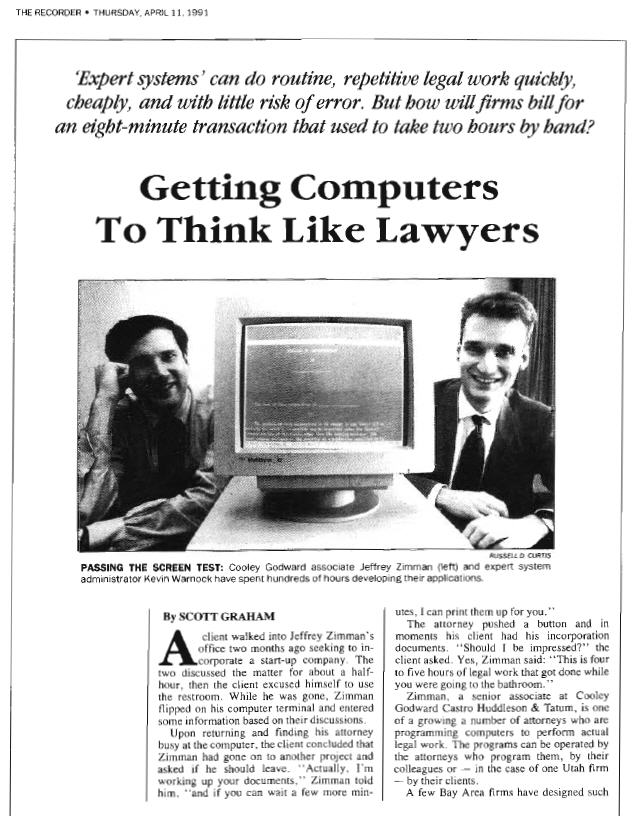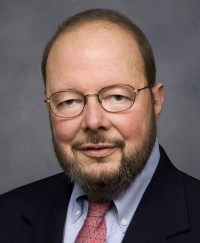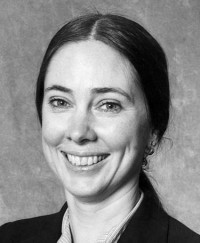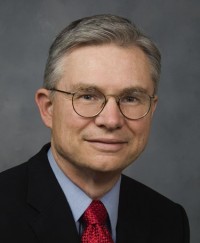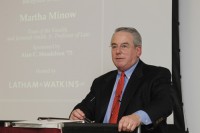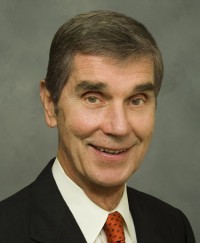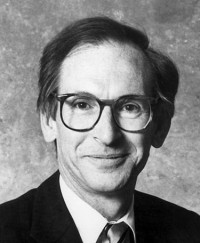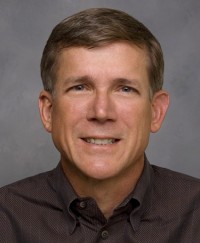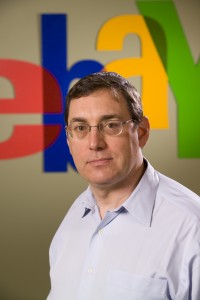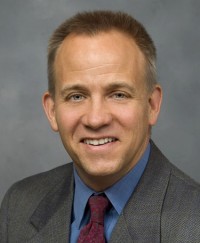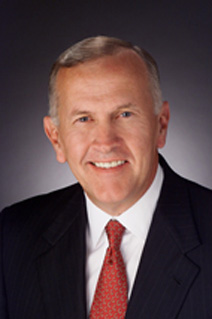Archive for the ‘Education’ Category
Is college is too easy?
The opinion piece published May 14, 2011 in The New York Times newspaper entitled Your So-Called Education makes a good case that university and college students are being cheated by their schools.
I have several friends that graduate this month from University of California, Berkeley. I hope they see this blog post and can comment publicly or privately whether they agree with the authors.
I certainly feel that the classes at University of California at Los Angeles, where I went, were too easy. The only classes I recall that really challenged me were Astrophysics and Computer Programming. The Astrophysics class was an AP level course, and I really had to work hard. But I remember a lot from that class today. The Computer Programming class was not an AP level class, but it was also really hard work. That class was the single most important class of my life, as it laid the groundwork for me to become a programmer.
All the other classes were forgettable and not challenging.
I’m nearly certain I learned to write in high school, not at university. The classes at Laboratory School, where I went to high school in Chicago, were harder than most of the classes I took at UCLA.
When I was at Brooks Institute, after UCLA, the classes were a joke. I could and usually did pass them with only one day a week of work. I regret I didn’t instead attend Art Center, in Passadena, CA, which reportedly required that an assignment be turned in 5 days a week. This would have been painful at the time, but beneficial to me in the long run.
If you are thinking about enrolling at Brooks, save your money. It was a full fledged economic scam. Yes, I learned to take pretty good pictures, but that was because of my talent for it that I developed after graduation. They could have compressed their ‘4 year program’ into six months of actual hard work and saved my parents a fortune. A Brooks Institute degree used to cost about what a Stanford University degree used to cost. I should have gone to Stanford. I’m certain I could have kept up with and done the work, given what I know of my Stanford graduate friends. In fact, I have a strong and powerful suspicion that even most of the classes at Stanford aren’t particularly challenging.
Comments?
EFactor – The largest network for entrepreneurs

I had never heard of EFactor until recently. It’s the largest [social] network for entrepreneurs in the world, according to the EFactor website.
I learned about EFactor from one of its cofounders, Marion Freijsen.
We were both final round judges for the Made for China Entrepreneurial Pitch Competition presented by Berkeley Chinese Students and Scholars Association. This event took place April 27, 2011 at International House in Berkeley, California. EFactor wrote a nice story about the pitch competition.
Freijsen invited me to see their extremely cool office at the cable car turnaround on Market Street in San Francisco, California. You can see Freijsen in the picture above. She’s the first person in the upper left. I’m the third person in the top row, from the left.
The EFactor office is in the Flood Building, a grand and important 100+ year old office building in San Francisco. What makes their office cool though is that it’s circular, as it’s in the front round part of the building you see when you’re standing at the cable car turntable and look up. I have seen this facade hundreds of times, but never before have I been inside one of those round offices.
Sadly, I’m still mostly unfamiliar with EFactor, as I devoted too much of my time with Freijsen talking her ears off about my plans to improve the human condition with my efficient housing, energy, food and finance ideas. Next time I see her, I’ll insist she do all the talking.
13th Annual UC Berkeley Business Plan Competition results
For posterity, here’s the email that University of California at Berkeley sent out notifying recipients about the winners of the 2011 Berkeley Business Plan Competition.
The finals were held at the Berkeley Entrepreneurs Forum today, April 28, 2011.
Since the online version of the email probably won’t stay online forever, I made a screen capture of the email, below.
Thoughts on the tragic death of Michele Dufault, a Yale University student killed when her hair got caught in a lathe
My heart goes out to the family of Michele Dufault, an undergraduate student of astronomy and physics at Yale University. Dufault died April 12, 2011 when her hair got caught in the powerful lathe she was using alone late at night in a Yale workshop.
I studied astronomy and physics at UCLA, so the story of Dufault’s death particularly moved me.
“Connecticut’s chief medical examiner ruled the death an accident, citing the cause as asphyxia due to neck compression” read the New York Times newspaper article where I learned of this tragic accident. The article didn’t say so, but something tells me the machine pulled her head into the machine and the rotation of the machine stopped, putting tremendous force on her neck, killing her. Even if she could reach her cell phone, she would likely haven’t been able to say a word, and the pain must have been overwhelming, with the still energized motor straining to continue rotating the work piece.
I shiver even thinking about how awful this death was, and how traumatized the students who discovered her body must be.
I write this post to warn people to be really careful working in the shop. Those with long hair should probably wear a shower cap to completely cover their hair.
When I grind metal, I wear ear muffs, leather work gloves, a respirator mask and a full face shield. I wear a full face shield when I use a drill or cordless screw driver, on the theory that even screws could break apart and hit me in the eye.
I am pleased that TechShop, the membership workshop I’m a member of, has installed a SawStop table saw that will stop the blade nearly instantly if a person touches it. This safety mechanism should be installed on all dangerous power tools, but in particular mills, drills and lathes that have exceedingly high torque that can literally squeeze you to death, even if they don’t cut you.
I don’t know if it’s true, but the SawStop website says there are 10 table saw amputations per day! Here’s a video on the SawStop website describing their safer saw.
I hope that schools don’t shut down their workshops because a beautiful 22 year old student lost her life in an accident. It’s important that students learn how to build things, for the world can’t run on software and ideas alone. In fact, I strongly believe shop class and home economics should be taught to every student that attends school.
I predict that Dufault’s tragic accident will spur dramatic safety improvements in school workshops, for her story is so tragic and her life was so full of promise. Perhaps her friends and family may take comfort that Dufault’s ‘life work’ may turn out to be saving countless others from workshop injuries by shining a bright light on machine safety.
SawStop has patented their technology, but perhaps it can be licensed to makers of tools SawStop doesn’t yet make, so that all the dangerous moving mechanisms of power tools can be outfitted to stop when touched by a person.
Again, my heart goes out to Dufault’s family, friends and colleagues.
How to get a real education, by Scott Adams, the creator of Dilbert
How to Get a Real Education by Dilbert cartoon creator Scott Adams advocates teaching entrepreneurship to most college students.
I saw Adams speak at UC Berkeley years ago, and he packed the Anderson Auditorium with more people than I’ve ever seen there before. Scott Adams is a great speaker, and he had some entertaining stories, such as how he got to be an engineer at Pacific Bell. It turned out Pacific Bell had a budget for a certain number of engineers, but they would lose that budget if they didn’t have all the spots filled. So, to avoid losing the budgeted funds, they promoted Adams to ‘Engineer’ even though he was not trained or schooled as an engineer.
Adams also told the story of how he became a big time cartoonist. He sent samples of his work to many publishers, but didn’t hear from anyone who wanted to sign him until a year later, when United Media, a company he wasn’t familiar with by memory, called him and said they had finally reviewed his submission and wanted to offer him a contract. He said he actually asked them to list some of the other comics they published to familiarize him with who this company was. The response was: we syndicate Peanuts and Garfield. Adams first contract was with the largest and best know cartoon syndication company in the United States.
How to Get a Real Education, published April 9, 2011 in The Wall Street Journal, is worth reading, and I recommend it very much. One of the stories he tells is how he persuaded college administrators to allow him and his friends to take over running the dorm where he lived. They were successful, so he got a free room to live in and got paid. When I read this account, it made me think of my plan to put elementary, middle school and high school students to work staffing the school lunch programs at their schools, which I wrote about here on April 9, 2011.
It was 20 years ago today that I got my picture in The Recorder while I worked at Cooley LLP
Twenty years ago today I was working on Cooley LLP’s document assembly software development effort.
On this day April 11th in 1991, the project was featured in a lengthy article in The Recorder, a San Francisco newspaper for the legal profession. Here’s the PDF scan I made from the paper copy of the article I’ve saved for the last two decades: Getting Computers To Think Like Lawyers – The Recorder – April 11, 1991.
That was a big day for me, as non lawyers at law firms almost never receive any attention from the press. It was also a big day for my project because Kenn Guernsey, Cooley’s Managing Partner at the time, left Jeff Zimman and me a nice voicemail congratulating us for our work. Zimman was the attorney that got the project off the ground by personally programming Cooley’s first document set, and without him, I wouldn’t have likely started Hotpaper.com, Inc. or later created the first online office suite, gOffice. Hotpaper was the first online document assembly application. The application was live on the Internet in 1997, two years before I changed the name of the company from Document Automation Systems LLC to Hotpaper.com, Inc. I licensed this online document assembly software to 30 of the Fortune 500, which I was proud of given my company at the time consisted of just me.
I run into Zimman on the San Francisco MUNI every year or so. He made partner at Cooley in six years I believe, and later became an investment banker at Lazard Ltd. Now he is Chair of Posit Science, which makes computer software that helps improve mental functions. It’s really interesting to me that we both became entrepreneurs after our stints at Cooley.
I credit Cooley with teaching me to be an entrepreneur, because starting such an innovative project inside a law firm is VERY difficult. The computer department isn’t normally charged with embedding the expertise of lawyers into software, so they don’t really know the lawyers. I got to know the lawyers because I needed to get the software to mimic lawyers. I spent a lot of energy hounding the lawyers with questions that must have seemed so simple to them. Zimman was a quick learner, and didn’t need much of my help to build the document models. But Zimman had to return to his lawyer duties after creating a few sets of documents, so I had to personally recruit new lawyers to get involved. I got help from some of the top lawyers at the firm at the time, including Hank Barry, who would later testify before the United States Senate when he was the Interim CEO at Napster.com at the height of its notoriety. Alan Mendelson, Paul Renne, Tony Gilbert, Lee Benton, Dan Frank and Susan Philpot were also instrumental to getting the project as far along as we did. I couldn’t find Dan Frank on the Cooley website so I’m not sure where he works now.
Perhaps the most actively helpful contributor to answering my many legal questions was Eric Jensen. He was a young hotshot associate at the time. I think Eric started at Cooley in 1988. I started at Cooley in 1989. Jensen would return my phone calls in 30 minutes. This was astonishing, as he was working like crazy in Cooley’s Sand Hill Road office with super lawyers Mark Tanoury and Craig Dauchy. Other lawyers that answered my questions, like Michael Jacobson, would often take days or weeks to return my calls, but Jensen usually got back to me in 30 minutes. We became good friends, and I fondly recall working with him. I would even go to the Sand Hill Road office on occasion to meet in person with Jensen. Jacobson was an outstanding question answerer by the way, and he went on to strike it rich as the top lawyer at EBay. He wrote me an enthusiastic letter of recommendation when I left Cooley.
When Cooley eliminated my position of project leader for its document assembly efforts during the recession of 1994 I was devastated. The whole project quickly died and the lawyers had to stop using the time saving software, which could allow an attorney to complete 4 hours of work in 20 minutes. The reason the software couldn’t be used indefinitely is the text of the documents in law firms is constantly being improved. So to keep a document assembly system useful, someone needs to apply those language updates to the software. Once I was gone, there was nobody to implement these upgrades, so the system couldn’t be trusted to produce the firm’s latest thinking. At the time Cooley’s attorneys and staff all used a Digital Equipment Corporation VAX minicomputer cluster via dumb terminals, and the document assembly software ran under the Open VMS operating system used on the VAX. So it was not a simple matter to train someone to take over the text update maintenance of the system.
New applications were out of the question, because without an ‘intrapreneur’ to recruit and encourage attorney experts to turn over their expert knowledge, they would not do it. At the time, the computer staff were housed alone with the accounting staff in a building blocks from where the attorneys worked, so there was no opportunity for the computer staff to get to know or make friends with the lawyers.
I feel bad that my project died, but I consider it one of the luckiest breaks of my life that my position was eliminated.
Otherwise, I might never have become an entrepreneur, and my life would not have been as exciting as it’s been. It was tough on me when Cooley’s Executive Director Ken Sargent (anyone know where he is these days?) broke the bad news and helped me pack my things, but it was a highlight of my professional life. The attorneys I helped felt bad for me that I had worked so hard and then lost my job, so they helped me get started in my own business by finding me my first client and effectively vouching for me. That client, Silicon Valley Bank, paid me $30,000 and got me off to the races. My next client was Bank of America.
It’s funny to recall that one of the young associate attorneys down the hall from me advised me to sue Cooley for letting me go!
I didn’t even consider suing Cooley. Instead, I kept my head high, didn’t complain or vent to anybody beyond my closest friends, and did my best to stay on excellent terms with everyone there, non attorney staff included. Cooley paid me a nice severance package. Had I sued and somehow gotten a few extra dollars, I am 100% certain those dollars would have been ‘nothing’ compared to the value of their help in getting me established in business. In 1999 when I raised $2 million in venture capital from Blue Run Ventures, I was able to get Jensen to represent Hotpaper. His representation was key to the modest success I had with Hotpaper, and to the modest exit for $10 million 14 months later. What some readers may not know is that in 1999 is was nearly impossible to hire a good lawyer. Lawyers needed to be won over via pitching back then, and they were very selective in taking new clients. Getting a firm as impressive as Cooley was difficult, even if you did raise venture capital money. Getting a lawyer like Jensen was nearly impossible. Had I sued Cooley, I would not have gotten them to later represent me, and who knows what would have happened. I am very much against suing in general, as it doesn’t help most of the time.
My advice is to never sue your employer if they eliminate your position! I didn’t have any basis to sue anyway, as they didn’t do anything illegal. It’s illustrative to note that the attorney at Cooley who advised me to sue never made partner and is no longer there.
It’s so much better to leave nicely and stay friends.
It’s a very small world, and the people you know today you will likely still know 20 years from now. I can’t believe how fast 20 years just flew by.
I’ve stayed in touch with my attorney friends from Cooley, and Eric Jensen has been my attorney since 1999. He now leads Cooley’s business department, which accounts for a majority of the firm’s revenue, to my knowledge. Although Jensen wouldn’t say so, he’s what I consider to be one of the best attorneys in the United States. I’m grateful he continues to work with me, as my company must be one of his smallest clients. I have sent my friends to Jensen, including Priya Haji who started World of Good, Inc. which she later sold to EBay and Charity USA, and Andrew McCraith, who started and raised $15+ million in venture capital for Silicon Clocks, which was later acquired by Silicon Labs.
I have received glowing reports from everyone I’ve referred to Jensen.
On this 20th anniversary, I want to thank everyone I’ve ever known at Cooley, including Ben Studebaker who hired me in 1989 and the late Helen Gaffney who promoted me about 6 weeks after I arrived into a position that allowed me the freedom to become an intrapreneur and work on Cooley’s document assembly project. I only knew Studebaker for a matter of 6 weeks or so. I worked very hard during those first six weeks, one night staying several hours past my quitting time to finish a large project assigned to Gaffney by Susan Philpot. I got it done the day it was assigned and it was on Studebaker’s desk when he arrived in the morning. Philpot was and probably still is a feared partner at Cooley, and I’m sure Gaffney and Studebaker appreciated my quick work. I never mentioned I stayed overtime, and I never charged Cooley for the extra effort. But I think it had something to do with Studebaker offering me his job, which included supervising the spending of $500,000 per year, after about 6 weeks on the job. He had been at Cooley for a long time – at least 10 years I recall. He cashed out some of his retirement plan to attend Harvard Divinity School, where he had been accepted. He didn’t seem the type for either divinity school or Harvard. He did seem like he would make an outstanding religious leader, however, as he had an immensely likable personality and was very well thought of at Cooley. I certainly admired his conviction and risk taking. I wonder what became of him, and if he should find this post I hope that he will write to me and fill me in on how his life turned out. Thank you Ben, for you changed my life.
I want to remember my friend Sandy Price, perhaps the first attorney I met and talked with at Cooley. I had only been there a couple of days and I was there late and needed to make a photocopy. I didn’t have an access code yet, and I had to ask Price to activate the photocopy machine for me using her Equitrac accounting device code. Price worked really late almost every night… near midnight lots of nights. I’m still friends with her, and had lunch with her earlier this year. Her hard work paid off, as she’s been named a Super Lawyer every year since 2004. Price is now a partner with Sideman and Bancroft LLP, and if you need an estate planning attorney, I doubt you could find a better lawyer to help you.
I also want to remember my friend James Pirie, who reported to me for a while and who graciously agreed to handle some of my responsibilities so I could work harder on the document assembly project. He put himself at some risk by doing this. He never got in any real trouble though, to my knowledge, and Ken Sargent, the Executive Director, privately congratulated me for delegating what I could to Pirie, saying it was the only way to ‘get things done.’ I trained Pirie to do things he would have never normally learned in his job at the time, and I had complete faith in his ability to safely handle these sensitive computer tasks.
I also want to thank Bill Bradshaw, who handled purchasing of supplies for the San Francisco office. He was an extremely patient friend, and although I’ve lost touch with him, I fondly remember our friendship.
I want to acknowledge Carole Hearn, Cooley’s Director of Finance. I think she’s been there some three decades now. She spent hours educating me about office politics, trying very hard to help me navigate a path that was obscure to a bright eyed 25 year old who had never worked in a law office before. I hear from Hearn every so often, and the last time I saw her in person, about 10 years ago, she gave me a big hug.
I also want to thank Susan Newberry, then the Administrator for the San Francisco office. She’s still at Cooley, with more responsibility. Newberry and I fought, and I ultimately had to lobby to change my reporting relationship so that I reported to a special committee called the Document Automation Committee. This committee consisted of partners Zimman, Barry and Philpot. To my knowledge, the only other non attorney at Cooley that reported to a committee of partners was Sargent, the Executive Director. Even though my battles with Newberry were exasperating and stressful, it was educational and beneficial to have had to do battle with her. Her decades long tenure at Cooley is testament to her political skill and courage.
What’s interesting about these political battles is that they really helped me prepare for later battles with far bigger stakes, involving millions of dollars. Thus, Cooley really did help educate me to be a successful entrepreneur, as I don’t think high stakes office politics can be learned in school.
I credit my political skill with my being able, as the sole founder, to take my startup Hotpaper.com, Inc. from idea through to a $10,000,000+ acquisition.
In my experience, Cooley really does live by its values and vision, and I am a product of the firm’s many good deeds.
My 5 years at Cooley were instrumental to my professional growth and success.
Thank you Cooley.
University of Chicago Laboratory Schools alumni gathering in San Francisco
Last evening, April 6, 2011, I attended a get together for friends and alumni of University of Chicago Laboratory Schools. There were people there that graduated from Lab in 1960. This was not a class specific gathering, so many years were represented among the approximately 75 guests. I was the only attendee from my class, sadly. The last time I attended one of these gatherings, my friend and classmate Harry Bims was there. Bims is a fellow tech entrepreneur, which gave us even more to talk about.
The venue for the event last evening was the elegant home of class of ’75 alum Pamela J. Joyner in San Francisco, California. Thank you to Joyner and her husband Fred Giuffrida for opening their home.
David W. Magill, the Director of Lab School, spent some time telling the group about the changes underway on campus. The most striking news is that since the University of Chicago is growing so rapidly, there are no longer enough spots at Lab School to accomodate the children of University professors.
University of Chicago recruits top professors by promising them that their kids can attend Lab School. Some children of new professors are now placed on the Lab School waiting list, which Magill said has not ingratiated him with the deans he has to deliver the bad news to. As a result, Lab School is physically increasing the size of its facilities. The University gave them an unused building close by the current Lab campus. This unused building is now being demolished. In its place will be a stunning early childhood campus for nursery school through 2nd grade students. The space on the primary campus now used for those students will be recaptured such that the primary campus will be able to accomodate increasing the high school class size by about 100 students. This will mean that all University affiliated students will be guaranteed a spot, which should make the department deans happy.
The Laboratory Schools contributed more to what I’ve accomplished in life than any other single contributor. I am grateful I am the son of a University of Chicago professor, which enabled me to attend the Lab Schools.
Magill and I talked at length. I had met him at the last such gathering I attended, about 6 years ago. I was pleased to learn from Magill that middle school students are taught cooking and must know how to cook a meal before they can graduate from 8th grade. This was not a requirement when I was a student there. The only hard requirement was that we all had to know how to swim.
When I heard there is no more general shop class, Magill said it was impossible to find a suitable replacement teacher after the long time teacher retired, so they abandoned the program. I expressed my extreme unhappiness about this sad condition. He said they have plans to add wood shop, which is a great start. But I remember vividly using a sheet metal brake to bend sheet metal into a tool box, which I still use. That’s not part of what I consider wood shop, but it was an important part of my education. The sheet metal brake had a material width capacity of 8 feet — something noteworthy to me now because the brake at TechShop can only accommodate 4 foot wide material, and I need a brake to bend 5 foot wide material, since my RTS bus conversion is built in 5 foot wide modules. It’s been a while since I was in middle school, but I can remember that sheet metal brake like I saw it last month.
Had I not had experience with quite a few different wood and metal working tools in middle school, I doubt I would now be a member of TechShop. I doubt I would have complete confidence I can create a super green bus conversion. I doubt I would be considering starting a green housing venture.
Teaching students to cook and to build things are critcial skills, and I hope Lab School expands its teaching in these areas as quickly as practical given its many other priorities.
Finally, I was fortunate to meet Beth Wittbrodt, Director of the Lab+ Campaign. The Lab+ Campaign is raising money for the early childhood campus that will allow the entire school to expand in size. Wittbrodt sought my opinion about how to reach out to alumni most effectively. I gave her my best thinking on the subject, and I found her to be quite impressive and thoughtful. Her first job after school was to personally author 1/3rd of an almanac several inches thick published by one of the most well known publishers in the country. She was 26.
My 4th day of school in Amsterdam
[This entry is from my 1976 handwritten diary. On August 16, 2012 I posted this to my blog and I added this bracketed language and also the photograph, which is recent, not from the 1970s. Thank you to Flickr user _dChris for permission via a Creative Commons license to use the picture. I was in 7th grade when I wrote this journal entry. I typed this post as I wrote it, including the mistakes, so you can see how I wrote back then. Keep in mind this is my private diary, and I’m sure I could have written with fewer errors had I known I would be showing it to the world years later. On March 30, 1976 my family moved from Chicago, Illinois, USA to Amsterdam, Netherlands for about four months. I wrote in my diary frequently during that time, and I plan to post all the entries to this blog.]
This was my forth day of school. I only said a few words to Andrea (American girl) and I moved my seat over to a boy section instead of a girls section.
I’ve got the job of washing the dishes at home. I am charging a lot cheaper now at home. I charge $1:00 to wash dishes and empty the dish washer. I only charge 1 guilder (37 cents) here and I have to do the dishes by hand.
so that means I get 17 guilders a week (I work 2 times a day 7 days a week plus my 3 guilder alowence.
I am getting used to going to school now. I can to the work so easily and fast I hope I get switched to a higher grade.






